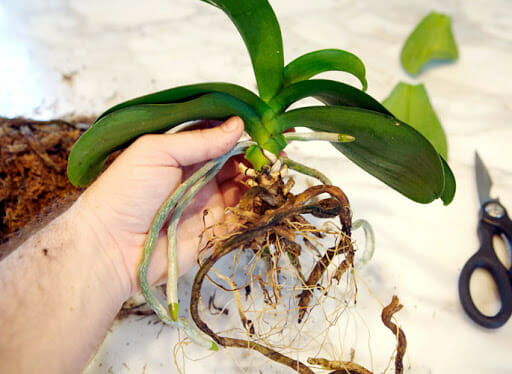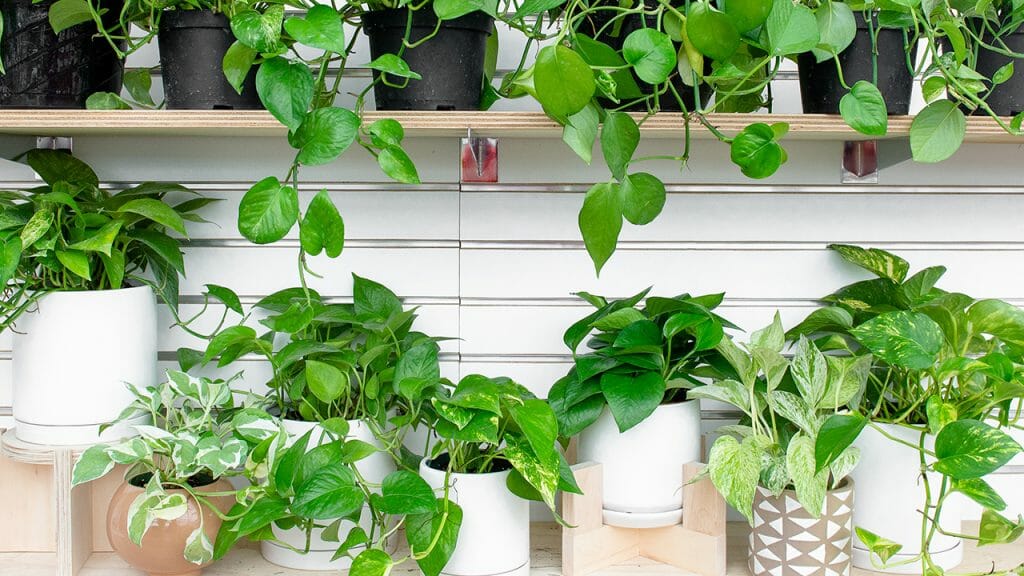
Do I cut off dead orchid stems? As soon as their petals fall off and orchids begin to die, you should start cutting off their stems to make room for new flowers to start blooming again. Dead stems are considered generally unhealthy.
Now, cutting dead stems off an orchid isn’t always a guarantee that beautiful flowers will spring up in their place. But more often than not, when done right, you’ll have a happy and healthy plant again! The classic appearance of an orchid suggests beauty and elegance, and withering stems don’t convey that look at all.
What Causes Dead Orchid Stems
Before we look at the correct way to cut off dead stems (so you don’t kill your orchid), let’s look at why orchid stems die in the first place. Just like with birth, blooming is taxing and requires energy from the plant.
After orchids are done producing flowers, the loss of energy will cause the stems of these orchids to die eventually. Removing dead stems from an orchid also helps to reduce the amount of energy they lose, and they can then start producing new flowers. When they bloom, cutting off their dead stems can determine how many times they bloom.
How to Cut Off Dead Orchid Stems
There are a series of things you should understand before cutting off dead orchid stems. Think of it as surgery. You have to cut off the dead stems in the right way with the right tools, or you risk killing off the orchid entirely.
Unlike most living things, orchids regenerate new roots, stems, leaves, and flowers. Since cutting off dead stems helps the flowering plant save its energy, they refocus that energy into blooming again.
In some very rare cases, there are orchid species that do not need this process to refocus their remaining energy into producing new flowers. We have different species of orchids like the Brassavola orchids, Catasetum orchids, Cattleya orchids, and the Cymbidium orchids, among many others.
Some things to keep in mind while cutting off dead stems are:
- What are the species of orchids that you have available in your garden? If you have orchid species like the Epidendrum orchid, then there is no need to cut off their stems when they die because their flowers will start whether you cut them off or not.
- Wait for all the flowers to drop before brandishing your pruning tools. It will be a waste of good flowers if you cut off the stems of your orchids while they are still producing flowers.
- Cutting off dead stems requires precision, and you cannot do this with just any tool. Although it may look tempting to reach out and snap off the dead stem with your hands, the use of sharp, sterilized tools is highly recommended. You can buy pruning scissors for more efficiency, but in the absence of that, you can use a sharp knife or normal scissors. It’s important to make sure the tool is very sharp for a precise cut. To make it easier for the plant to sprout new growth, make a snip very close to the ground. Avoid infecting your orchids by boiling your tools before using them.
- Before you begin cutting off dead stems, take a closer look at your orchids to determine what else needs to be cut off. Be careful you don’t cut the spikes in place of the stem. Although spikes are often mistaken for the stem, they appear greener in color, while dead stems will appear yellowish or brownish. Cutting spikes instead of stems will mean your plants won’t re-bloom.
- Now it’s time to cut off the dead stems from your orchids. Take the dead node in your hand and check if it’s completely dead or not. If it is not, using your other hand, snip at least three centimeters from the other nodes that did not produce flowers. If it is completely dead, then cut a few centimeters from the roots. While you’re at it, you may want to take a look at the dead roots and trim them as well. Now, you are not asked to dig up your flowering plant and snip away at the roots, but if you notice any dead root protruding from the soil, then cut it off.
- This may sound funny, but plants need antifungal treatments as well. When you get a cut, without the right antibiotics, that wound may get infected. The same applies to plants as well. When you cut off dead stems, the plant becomes exposed to infections. Antifungal treatments keep the orchid from getting infected so they can regrow without many issues.
6 Key Tips on How to Keep a Healthy Orchid after Cutting off Stems
Now that you are done cutting off the dead stems of your orchid, the next step is to wait for the flowers to re-bloom. While you’re doing that, there are a few tips on how to ensure a successful and quick re-blooming experience.
- Because most orchids are in pots, the amount of nutrients available to them is limited. It is advised that you change your soil mix as often as your plant blooms. The higher the concentration of the nutrients in your soil, the higher the chances of your orchid producing new flowers, and quickly at that.
- Also, check to make sure that your orchids have not outgrown their pots. If half of the roots are beginning to appear at the surface, then your plants have outgrown their current pot. You’ll have to put them in a bigger pot.
- This is purely optional, but if you feel the nutritional value of your soil mixture is not so high, you may want to add fertilizers to your soil to prompt new and healthier growth. You can use animal droppings to increase the richness of your soil or go for organic fertilizers. Either way, this plays a vital role in the quality of your orchid. Depending on the species of the orchids you have, the right mix will work wonders on them.
- Constant hydration is a very important aspect of keeping your orchids healthy. Make sure they are watered frequently to keep them from withering and dying. Orchids may not require water every day, but you should never allow the soil to become hard or dry and loose.
- Make sure your pots have good drainage because too much water at the bottom of the pot will make the roots rot, causing the flowering plant to die.
- Sunlight is a vital part of any plant growth, and the same applies to orchids as well. Make sure your pots have access to regular sunlight to allow them to grow into strong, healthy plants.
Do Orchids Rebloom on Old Stems?
Do orchids rebloom on old stems? The answer is yes, but it may take some time and effort to get them to do so. If you want your orchids to rebloom on old stems, you’ll need to remove the faded flowers and seed pods, as well as any dead leaves. You’ll also need to fertilize them regularly and water them well. With a little patience, your orchids should start blooming again in no time!
Frequently Asked Questions:
Will an orchid stem grow back?
An orchid stem grows back but not in the same place. It regenerates a new one when you cut the old one, but it generally does not grow back in the exact same spot.
There is, however, the rare occasion when it does, as is the case of the orchid species called Phalaenopsis.
The Phalaenopsis grows the same stem after you cut it above an eye. Bear in mind that new stems come, but depending on the species, it could take a couple of days to several months for them to fully bloom. Always exercise patience when dealing with orchids.
Why are my orchids stems turning brown?
When the stem of your orchid starts turning brown, this means that the dead flowers are spiking. There is no need to panic. This is just a natural part of blooming.
When orchids produce flowers or bloom, they use a lot of energy in producing the flowers and keep them alive. When the flowers start falling off, the orchid has begun to run out of energy and is going into a dormancy period, turning its stems brown.
What is the lifespan of an orchid?
Although the number is not precise, there are roughly thirty thousand different species of orchids available. Now, these species have been hybridized to create about a hundred and twenty thousand new varieties.
Apart from the deserts or really cold areas like the North Pole, orchids can be grown anywhere in the world. You’ll need the right amount of sunlight, soil, and water. When you maintain orchids properly, they can last as long as 100 years or more.
Conclusion
Having and grooming an orchid is neither very complex nor hard work. It just requires a little knowledge of gardening and consistency. Knowing things like when and how to prune your orchid goes a long way in determining the quality of the flowers you have.
So if you already have an orchid, want to pick up a new hobby, or want to venture into a business, this information will prove very helpful when it comes to maintaining your orchids. As soon as your flowers finish falling off and you notice the stems turning yellow or brown, just know that it’s time to cut off the stems so they can start blooming again.


